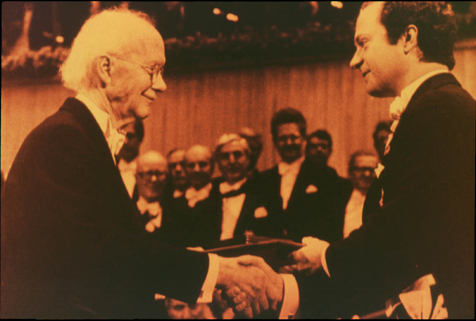
Faculty Research 1980 - 1989
A glycerol-3-phosphate dehydrogenase null mutant in BALB/cHeA mice.
Document Type
Article
Publication Date
1989
Keywords
Brown-Fat: an, Deoxyribonucleases-Type-II-Site-Specific, DNA-Probes, Exons, Genes-Structural, Glucosephosphate-Dehydrogenase: ge, me, Introns, Mice, Mice-Inbred-BALB-C, Mutation, Nucleic-Acid-Hybridization, Poly-A: ge, Restriction-Fragment-Length-Polymorphisms, RNA: ge, RNA-Messenger: ge, SUPPORT-NON-U-S-GOVT, SUPPORT-U-S-GOVT-P-H-S, Tissue-Distribution, Transcription-Genetic
First Page
4679
Last Page
4683
JAX Location
1745
JAX Source
J Biol Chem 1989 Mar 15; 264(8):4679-83.
Grant
HD06712
Abstract
A mutation in the BALB/cHeA subline of mice has resulted in loss of the glycerol-3-phosphate dehydrogenase (glycerol-P dehydrogenase) activity in adult tissues. Analysis of F2 offspring segregating for enzyme activity levels and a PvuII restriction fragment length polymorphism in the Gdc-1 gene on Chromosome 15 indicates that the mutation has occurred in or around the structural gene. Southern blot analysis failed to detect any major change due to chromosomal insertion, deletion, or rearrangement of the mutant gene. In vitro measurements of transcription in isolated nuclei failed to detect any difference in trans3HRscription between the BALB/cHeA and BALB/cBy strains of mice. However, Northern blot analysis with poly(A+) RNA isolated from brown fat shows that the mutant has about a 50-fold reduction in hybridizable transcripts of altered size. The data suggest that the mutation affected the processing of nuclear transcripts of glycerol-P dehydrogenase. The morphological, physiological, and reproductive characteristics of the mutant mice appear normal. This suggests that alternate pathways of energy metabolism and lipid synthesis exist which obviate the function of glycerol-P dehydrogenase.
Recommended Citation
Prochazka M,
Kozak UC,
Kozak LP.
A glycerol-3-phosphate dehydrogenase null mutant in BALB/cHeA mice. J Biol Chem 1989 Mar 15; 264(8):4679-83.

